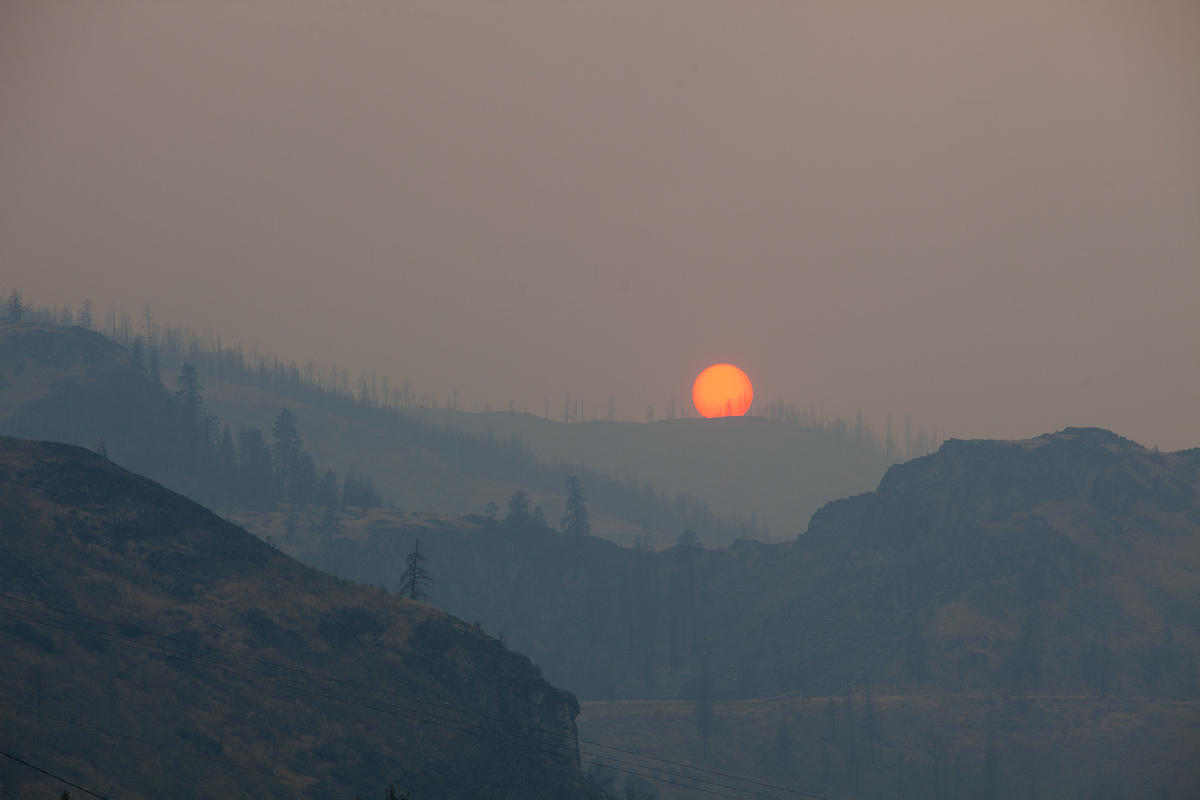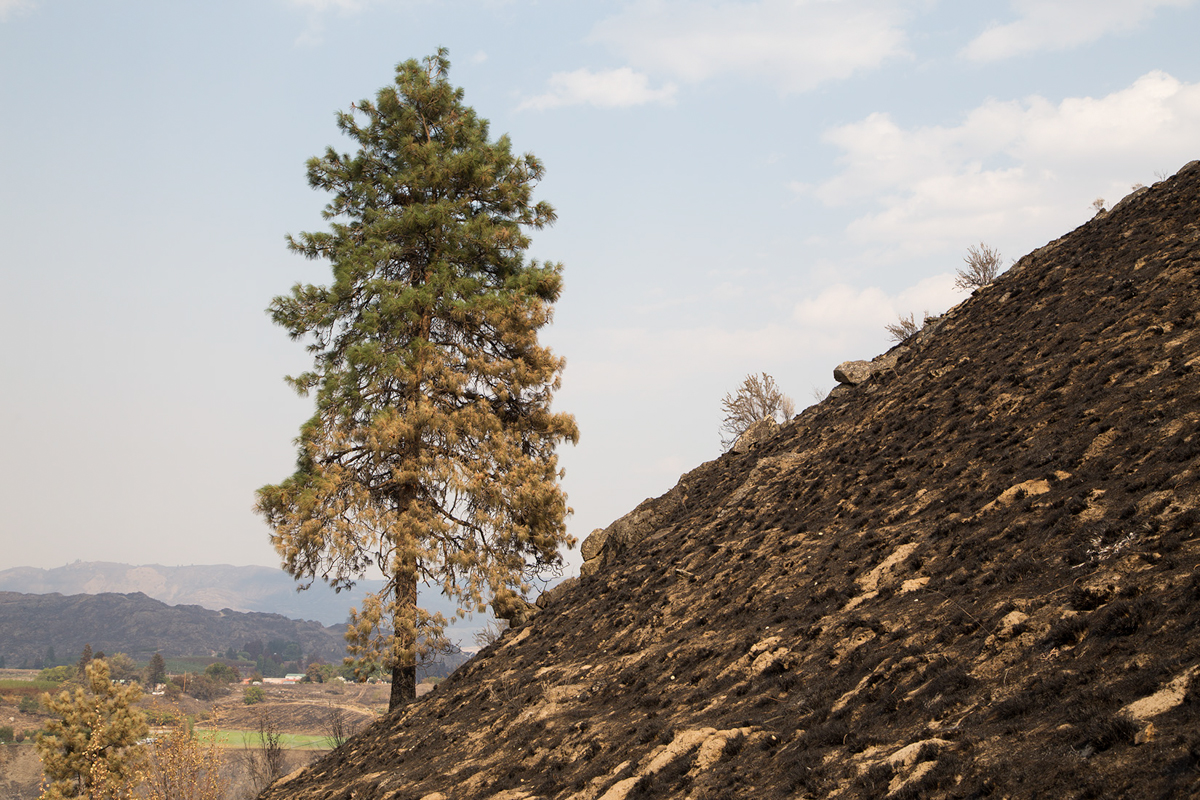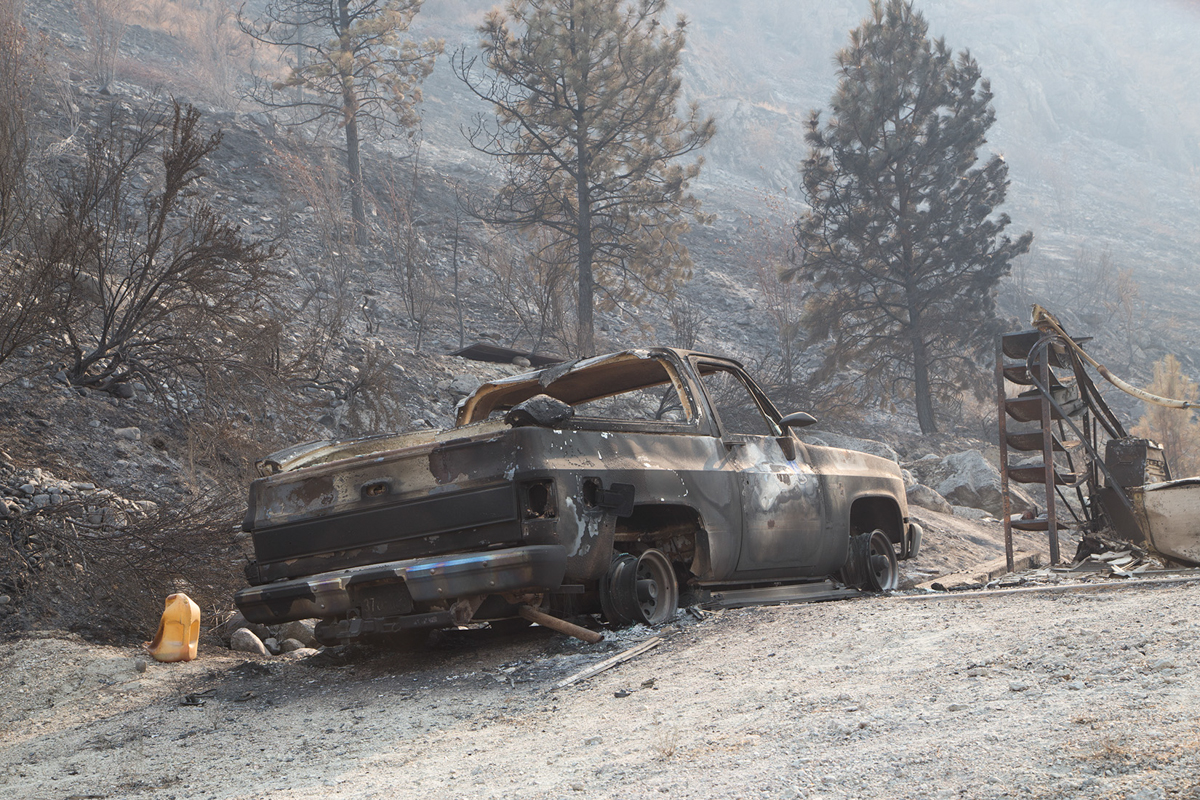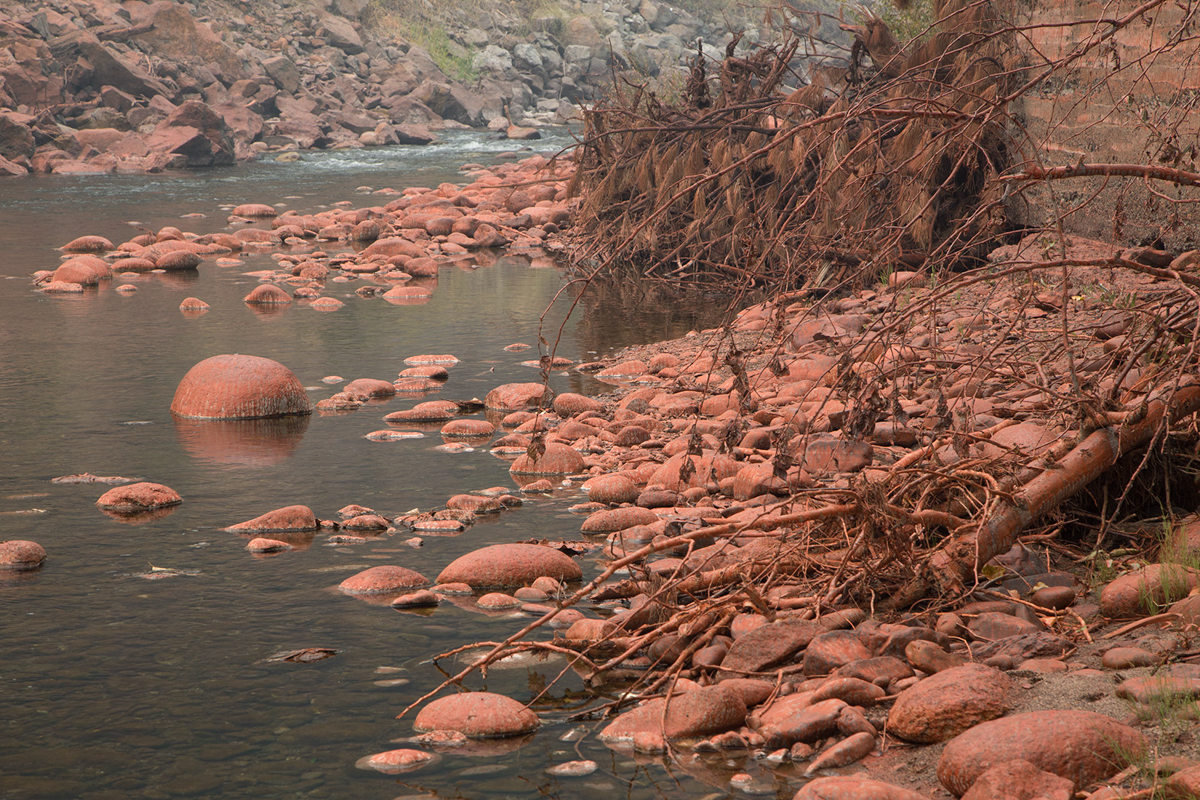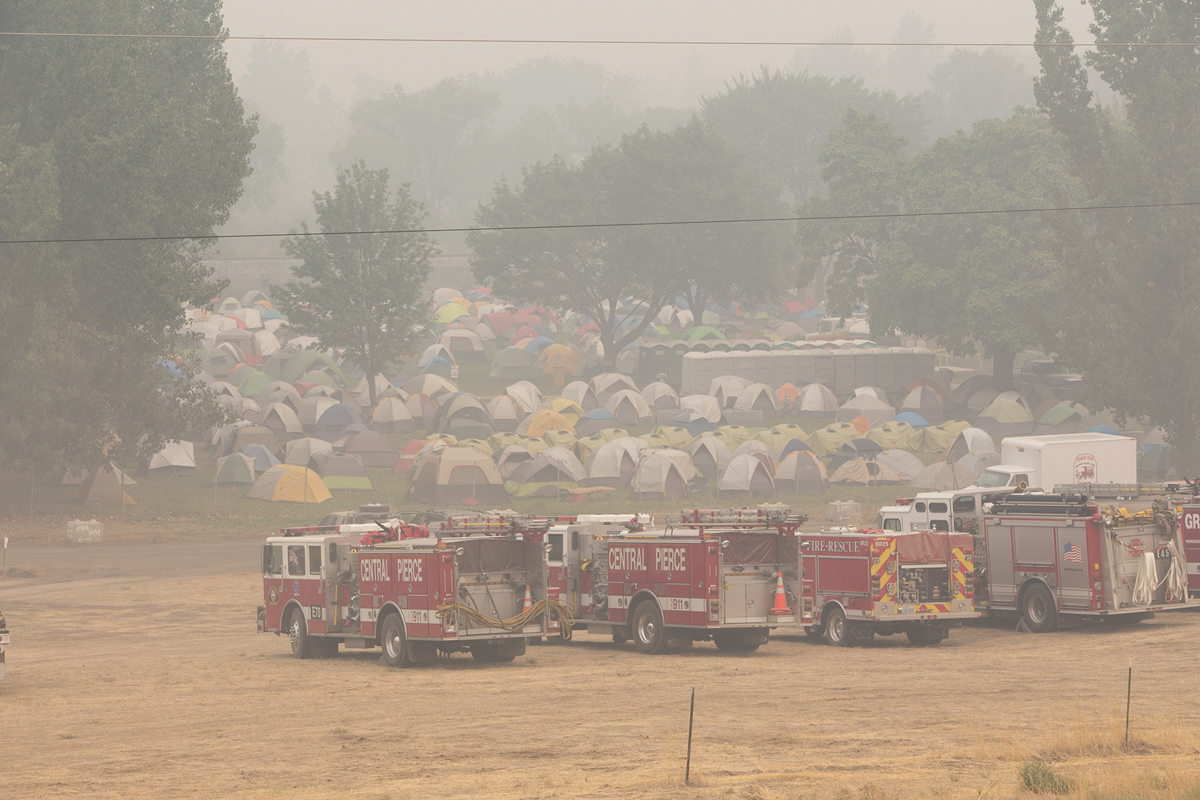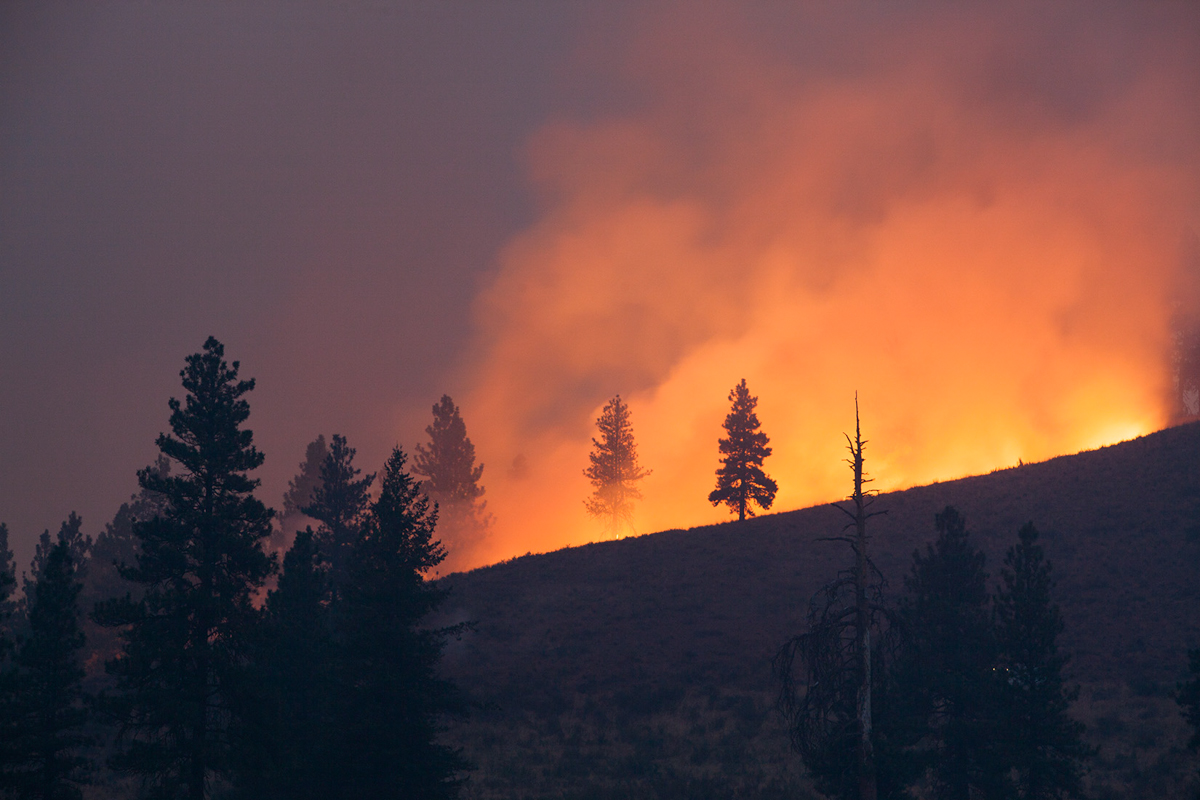Today, an op-ed in The Seattle Times by our state director, Mike Stevens, with Yakama Nation Natural Resources director Phil Rigdon and Commissioner of Public Lands Hilary Franz, calls for a transformative level of federal investment in wildfire resilience.
Innovative Prescribed Fire Training Comes to NE Washington for First Time
Congress Commits to Solution to Wildfire Funding
IN THE NEWS ON FIRE
Photography by John Marshall
Once again our state has set a grim record. For the second summer in a row, we are experiencing the largest wildfire in our state’s history. Nearly 1 million acres have burned, hundreds of homes have been lost, and, most devastating, three firefighters lost their lives fighting the blazes that blanket North Central Washington.
Read our Board Chair Byron Bishop’s guest opinion column about actions we can take now to reduce the threat. It appeared in the Seattle Times, Sunday, Sept. 6
The Conservancy has been advocating for and working on strategies to improve our resilience to these megafires.
Here’s a roundup of recent news coverage:
Seattle Times, Nov. 9: Legislature needs to provide the funding to pre-empt wildfires
Seattle Times editorial on the need for Legislative funding for fire solutions
Seattle Times, Nov. 9: Congress needs to address wildfires like any other disaster
Seattle Times editorial in support of the Wildfire Disaster Funding Act, which is a Nature Conservancy priority for Congress. It would bring funding stability to the Forest Service, which has to spend money designated for improvements on fighting fires.
KING-TV, Oct. 15: Forest restored to pre-wildfire condition
KING TV’s new environmental reporter, Alison Morrow, did a feature story on the collaborative restoration project at Oak Creek Wildlife Area, designed to make the forest more resilient in the face of wildfire.
Seattle Times, Oct. 11: Fighting Fire With Fire
Front-page storyon the importance of controlled burning in fighting wildfire, and the barriers to getting more done in Washington:
“We have a set of regulations that are fairly outdated,” said Reese Lolley, director of the Nature Conservancy’s Eastern Washington Forest Program. “More and more, I think we are looking at how do we better live with fire, and how do we use it as a tool.”
Our forest scientists played a critical role in helping the reporters develop the story.
The Olympian, Sept. 27: Dramatic climate shifts require attention to forests, water
Guest opinion column by Washington State Director Mike Stevens and Public Lands Commissioner Peter Goldmark.
Wenatchee World, Aug. 30: Preparing for the next megafire
“The federal and state agencies, local government, and stakeholders through groups like the Nature Conservancy and the North Central Washington Forest Health Collaborative, know what to do and are ready to go.”
Tri-City Herald, Aug. 28: Wildfires should have natural disaster status
“Federal Agencies have run short of wildfire suppression money eight times since 2002, according to The Nature Conservancy in Washington State.”
Seattle Times, Aug. 26: Why we have such large wildfires this summer
“Analysis by the Nature Conservancy and U.S. Forest Service found that about 30 percent (2.7 million acres) of Eastern Washington federal, state, tribal and private forestland needs some kind of thinning or treatment to reduce the risk of wildfire. That could include cutting smaller trees or using planned fires to thin the forest.”
Wenatchee World, Aug. 19: We burn, but we have initiative
“‘We need to be proactive in reducing these hazardous fuels,’ said Lloyd McGee of the Nature Conservancy. That requires controlled burns and mechanical treatment.”
Yakima Herald, Aug. 19: New tools needed to improve wildfire prevention
“Collaborative efforts between the state, the Forest Service and the Yakama Nation at thinning fuel and restoring forest health have reduced fire risks, said Mary Sutton Carruthers, coordinator of the Tapash Sustainable Forest Collaborative.”
Wenatchee World, Aug. 18: Leaders search for solutions for wildfire management
“‘We’re fighting a war. To win a war sometime we have to learn how to live with the enemy,’ said Lloyd McGee, Eastern Washington Forests Program manager for The Nature Conservancy.”
Yakima Herald, Aug. 6: Advocating for the Wildfire Disaster Funding Act
“‘We’re going to fight these fires and pay for them one way or another, but this sets up a more rational way of funding that doesn’t impact other programs,’ said Cathy Baker, governmental relations director for The Nature Conservancy in Washington. ‘We’re really pleased with the strong bipartisan support for solving this. They just haven’t gotten there yet.’”
IMAGES FROM THE FIRE LINE
Photography by John Marshall
The Washington wildfires have been a devastating tragedy for our state. Here are a few of the people and places impacted by fire.
Minimizing the Impact of Megafires: Funding and Improving Management
Two Strategies for Consideration at Senate Committee Hearing in Seattle
Written by Carrie Krueger, Director of Marketing
Photographed by John Marshall
As the Senate Energy and Natural Resources Committee meets in Seattle to examine this summer’s disastrous fires, The Nature Conservancy encourages the Committee to focus on two solutions the organization believes can provide relief from the worst of today’s megafires:
1. Support and fund the National Cohesive Wildland Fire Management Strategy: The Cohesive Strategy is the result of a five-year collaborative planning effort that aligns governments at all levels to help develop fire-adapted communities, resilient landscapes, and to improve wildfire operations. It provides an approved mechanism to get all layers of government working together, including cities, counties, states, Tribes and Federal Departments of Agriculture, Interior, Defense, and Homeland Security. The Cohesive Strategy works to:
- Manage vegetation and fuels through thinning and controlled burns;
- Protect homes, communities, and other assets;
- Manage human-caused ignitions
- Effectively and efficiently respond to fire.
2. Fix the way emergency firefighting is funded by passing a fire-funding solution such as the Wildfire Disaster Funding Act (WDFA): As the Forest Service and the Department of the Interior suppress the emergency fires, they have to dip into funds set aside for other projects—including some of those that can help reduce the risk of fires in the first place. This is different from how other natural disasters are paid for, such as hurricanes, tornadoes or floods. The Nature Conservancy encourages Congress to continue its work to find a bipartisan solution to fix the fire-funding problem, like the Wildfire Disaster Funding Act (WDFA) that creates a disaster funding process for emergency wildfires. WDFA has the support of hundreds of conservation, forestry, outdoor industry, sportsmen’s organizations and more.
“Today the Forest Service has already spent close to all of its firefighting budget for the year, so we know they will need to transfer money away from other programs soon—affecting programs that conserve the water, wildlife and wood resources our forests provide,” said Cecilia Clavet, Senior Policy Advisor at The Nature Conservancy. “We need a solution now to stop crippling the federal agencies managing our natural assets with disruptive funding shortfalls.”
“Climate change, drought, and insects and disease, and more people living closer to forests have created an urgent need for restoration,” said Mike Stevens, Washington State Director for The Nature Conservancy. “Only a commitment to restoration and the funding necessary to make it happen at scale can break the cycle of catastrophic fires that are taking such a tremendous toll on our state.”
America’s forests are the source of half our nation’s water; support one million forest product jobs; grow the largest and oldest trees in the world; are home to thousands of American wildlife species; and generate more than $14 billion of recreation and other economic activity on Forest Service lands alone.
Today these essential benefits are in jeopardy, due to the unhealthy state of our forests and the dangerous megafires that result from these conditions. For example:
- The U.S. Forest Service estimates more than 100,000 square miles of the forests they manage—an area bigger than Oregon—is now at risk for megafire.
- 55 years of records from the National Interagency Fire Center reveal that nine out of our 10 largest fire seasons have occurred after 2000, with three of our largest fire seasons coming since 2006.
- Since 2007, six states have experienced record-sized fires—Arizona, California, Georgia, Texas, New Mexico and Washington. New Mexico and Washington each broke their own records twice in this time period.
- Insurance experts estimate there are nearly 900,000 residential properties (worth a total of $237 billion) at “high” to “very high” risk of wildfire in 2015.

















